Cats are known for their love of freedom and exploration, but sometimes circumstances require them to be confined to a cage or crate. Whether it's for medical reasons, such as cage rest after a surgery, or for safety during travel, keeping a caged cat happy can be a challenge.
As a cat lover, you want to ensure that your feline friend remains content and stress-free even within the confines of a cage. This article will guide you through the steps to make a caged environment a comfortable and fun place for your cat.
Key Takeaways:
- Learn how to create a stimulating and comfortable environment for a caged cat.
- Discover the importance of regular human contact and mental stimulation for confined felines.
- Understand how to use food, toys, and scents to maintain a happy and healthy caged cat.
Creating a Comfortable Space
The first step in ensuring your cat's happiness while caged is to provide a space that is large enough for them to move around comfortably. The cage should be big enough to accommodate a bed, a small litter box, and space for food and water bowls.
Make sure the bed is soft and inviting, as cats enjoy warm spots for their afternoon naps. Placing a blanket or a piece of clothing scented with your smell can also add comforting scents that bring good feelings to your cat.
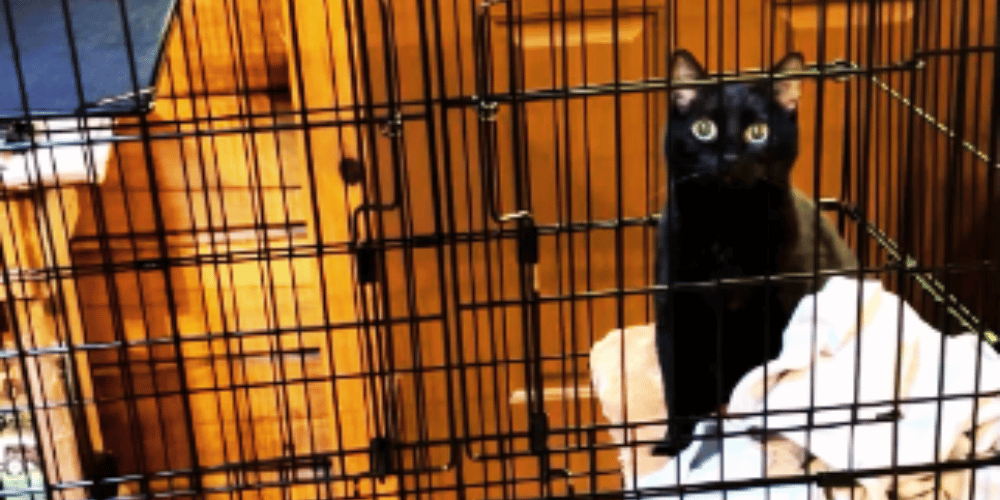
The Importance of Mental Stimulation
Mental stimulation is an integral part of keeping a caged cat happy. Without the usual environmental stimuli, cats can become bored and stressed. To prevent this, provide toys that encourage play and mental engagement.
Puzzle feeders that make your cat work for their food work wonders in keeping their minds active. Additionally, hanging toys or placing a bird feeder outside a window for visual stimulation can keep your cat entertained for hours.
Regular Human Contact
Cats are social creatures and thrive on interaction. While some feral cats may have a scary relationship with humans, most domesticated cats crave attention.
Spending time with your cat, talking to them, and offering gentle pets can help maintain their emotional well-being. Tossing treats into the cage or engaging in play with a wand toy can also strengthen your bond and keep your cat's spirits high.
The Role of Food and Water
Proper nutrition and hydration are essential for a happy cat. Ensure that the food and water bowls are always clean and filled. Gradually increasing the variety of food can also provide a new cat with some excitement during mealtime. Remember to place the bowls in a spot where your cat can easily access them without feeling cramped.
Comfortable Bedding and Warmth
Cats love to sleep in cozy and warm spots. Make sure the bedding in the cat's crate is plush and comfortable. During colder months, you might want to add extra blankets for warmth. Conversely, ensure the cage is in a cool place during hot weather to prevent overheating. A comfortable cat is a happy cat.
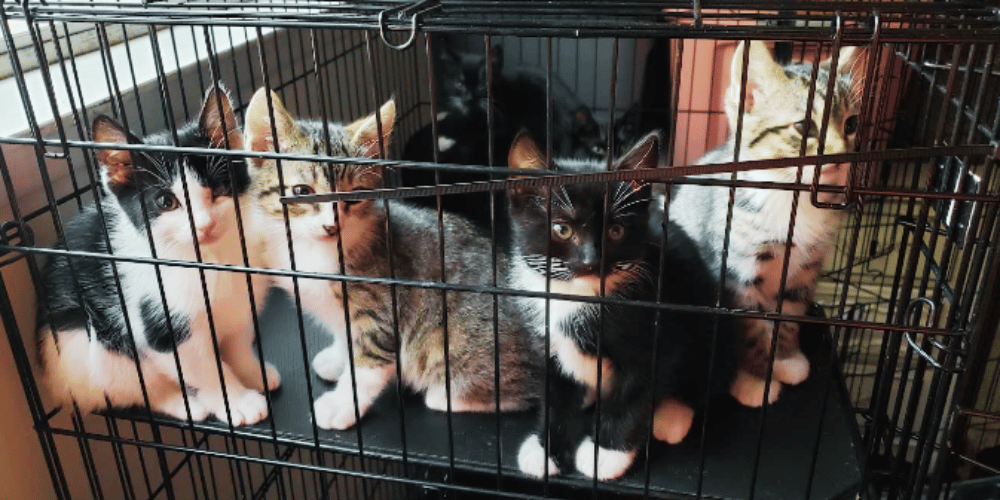
The Need for a Safe Place
Cats need to feel safe, especially when confined. Position the cage in a quiet area of the house where there's less foot traffic and noise. This will help your cat feel secure and promote relaxation. If your cat adores privacy, consider covering part of the crate with a light blanket to create a more secluded space.
Exercise and Playtime
Even though your cat is in a cage, they still need exercise. Open the crate door when possible to let your cat stretch their paws and explore a safe place. Supervised playtime outside the cage can help maintain their physical health and reduce stress. Use this time to engage in interactive play with toys that encourage chasing and pouncing.
Socialization with Other Pets
If you have other cats or dogs in the house, gradually decrease the distance between your caged cat and the other pets. This can help them get used to each other's presence without the risk of a direct confrontation. Always supervise these interactions to ensure all animals feel safe.
The Significance of Establishing a Routine
Establishing a routine for your caged cat can significantly enhance their sense of security and overall well-being. Cats are creatures of habit, and they find comfort in knowing what to expect throughout their day. By setting specific times for feeding, play, and cuddle sessions, you help your pet adapt to life inside the cage.
This predictability can reduce stress and prevent behavioral issues. For instance, feeding your kitty at the same time each day ensures they don't feel anxious about their next meal, making them more relaxed and content.
In addition to meal times, creating a routine for cleaning the cat's crate is crucial. A clean environment is essential for your cat's health and happiness. Allocate a few weeks to establish a cleaning schedule that works for you and your pet.
This will help your cat understand that although their space is limited, it's always clean and comfortable. Regular cleaning also minimizes odors and maintains hygiene, preventing your cat from trying to escape to a cleaner area.
The Art of Crafting a Cat's Sanctuary
Creating a sanctuary for your cat inside their crate is essential for their well-being. Cats are territorial animals, and even within the confines of a cage, they need to feel like they own the space. To foster a cat's scary relationship with their crate into a loving one, start by placing familiar items inside.
A blanket with their scent or a favorite toy can make the cat comfortable and secure. This personal touch transforms the crate from a scary, foreign place into a safe haven that they recognize as their own.
Moreover, it's important to remember that a cat's crate is not just a place for them to stay; it's their home within your home. To enhance this feeling, ensure that the crate is always clean and inviting. Regularly changing the bedding and maintaining hygiene with food water bowls will make the space more appealing.
For kittens or a new cat inside the household, this is particularly crucial as they acclimate to their new environment and establish a positive association with their crate.
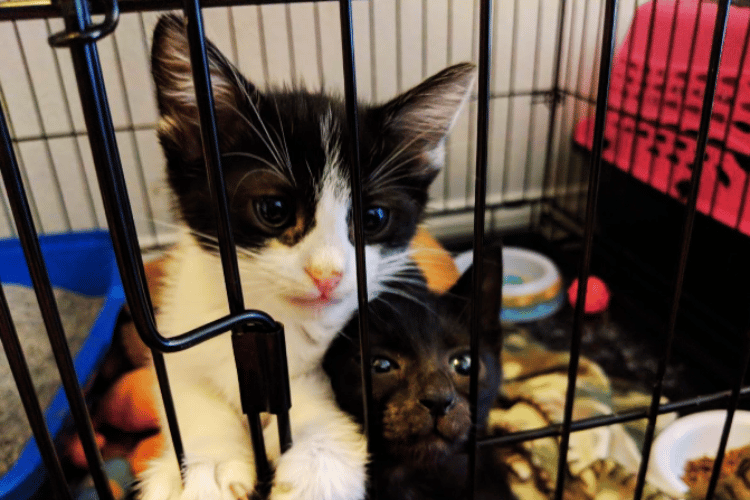
Feline Enrichment: Beyond the Basics
When it comes to keeping a caged cat happy, enrichment goes beyond just toys and treats. Visual stimulation can be incredibly enriching for a cat inside a cage. Consider placing the cage near a window where your cat can watch birds or observe the outdoors.
This not only provides entertainment but also allows your cat to satisfy its natural curiosity and hunting instincts in a safe and controlled environment. However, ensure that direct sunlight doesn't make the space too hot, which could lead to discomfort.
Another aspect of enrichment is the introduction of new experiences in a controlled manner. This could involve occasionally placing a new type of treat in the cage or introducing scents that are safe and appealing to cats. For instance, catnip or valerian can provide a sensory experience that keeps your cat engaged.
If you have a dog or another animal in the house, allowing supervised interactions can also be a form of social enrichment, as long as it's done gradually and both pets are comfortable with the encounter.
Introducing New Experiences Gradually
When it comes to introducing your cat to their crate or carrier, patience is key. Start by putting the carrier in a common area about a week before you need to use it, allowing your cat to explore it on their own terms.
This can help build a less scary relationship with the carrier, as the cat spends time sniffing and even sleeping inside it without feeling trapped. You can encourage exploration by placing treats or their favorite toy inside, making the carrier a rewarding place to hang out.
Once your cat seems comfortable around the carrier, you can begin to close the door for short periods while they're inside, gradually increasing the time as they become more at ease. This process can take a few weeks, but it's important not to rush it.
If your cat starts to associate the carrier with negative experiences, it can lead to a long-term aversion. By slowly building up their tolerance, you ensure that your cat feels safe and secure, whether they're in their crate at home or on the go.
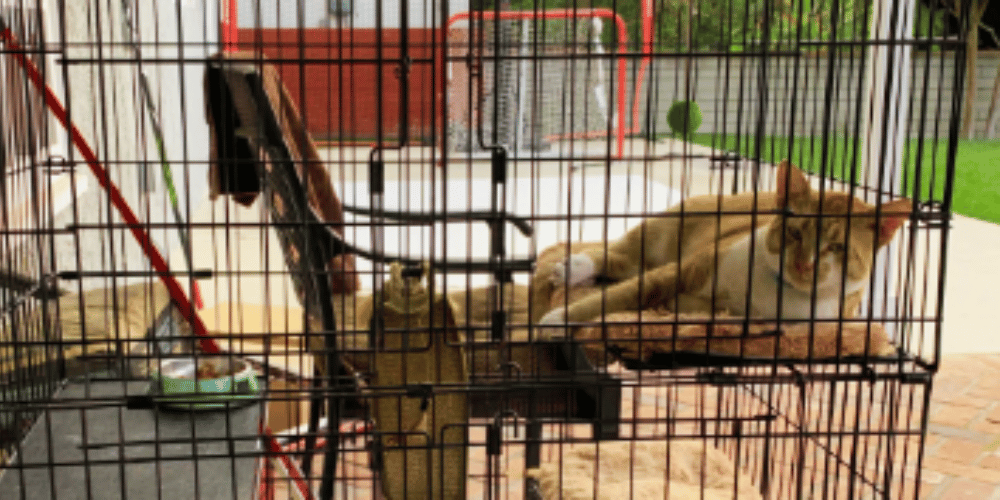
The Use of Cat Carriers
Sometimes, a cat's crate can double as their carrier for vet visits. To make this experience less stressful, keep the crate door open at home and encourage your cat to enter and exit as they please. This can help them view the carrier as a safe and familiar space rather than a source of anxiety.
Ensuring Enough Room for Litter
A small litter box is a must-have inside the cage. Most cats are particular about their bathroom habits, so keeping the litter box clean is crucial. Ensure there's enough room for your cat to use the box comfortably without feeling cramped.
The Benefits of Tossing Treats
Tossing treats into the cat's crate can be a fun game that provides both mental stimulation and a tasty reward. It encourages your cat to be active and can be a great way to make positive associations with the cage.
The Joy of Afternoon Naps
Cats love their afternoon naps, and a caged cat is no exception. Ensure that there are comfortable and warm spots within the cage where your cat can curl up and sleep. This will help them feel relaxed and content.
The Power of Scent
Cats have a strong sense of smell, and familiar scents can be very comforting. Consider placing a piece of your clothing inside the cage to provide a sense of comfort and security. This can be especially helpful for a new cat adjusting to their environment.
Gradual Introduction to the Cage
If your cat is not used to being caged, start by gradually introducing them to the crate. Leave the door open and allow them to explore at their own pace. Over time, they will become more comfortable with the idea of spending time inside.
Keeping the Cage in a Cool Place
Cats can overheat easily, so it's important to keep the cage in a cool place, away from direct sunlight and warm spots. This will ensure your cat remains comfortable, especially during the warmer months.
Providing Visual Stimulation
Cats are visual hunters, and providing visual stimulation is key to keeping them entertained. Place the cage near a window where they can watch birds or the outdoors. This can provide hours of entertainment and mental stimulation.
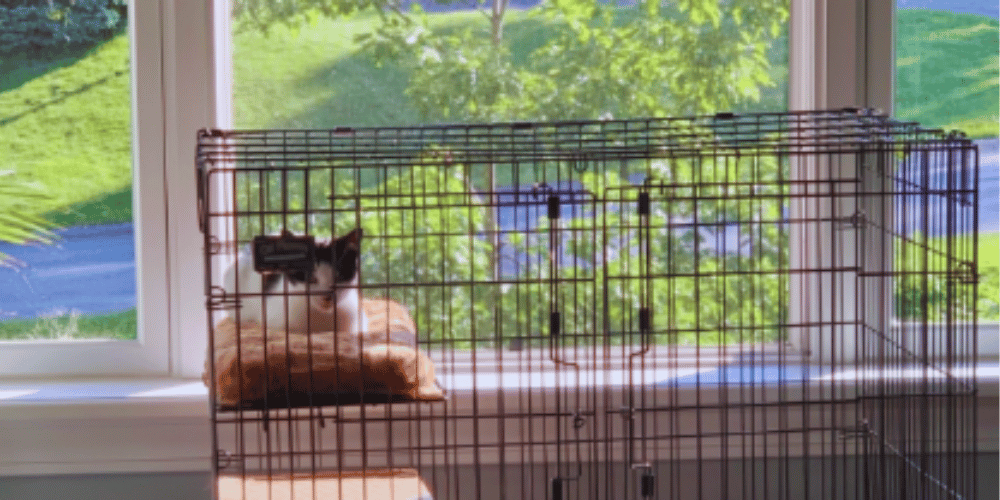
Summary
Keeping a caged cat happy involves creating a comfortable environment, providing mental stimulation, and ensuring regular human contact. By following the tips outlined in this article, you can make your cat's time in a cage a positive experience.
Remember to provide enough space, engage in play, offer a variety of food, and use comforting scents to maintain your cat's well-being.
FAQ Section
How long can a cat stay in a cage?
The duration a cat can stay in a cage depends on the reason for confinement. For medical reasons, follow your vet's advice. If it's for travel or safety, limit the time as much as possible and ensure they have breaks for exercise and play.
Can a caged cat still get enough exercise?
Yes, a caged cat can get enough exercise through playtime outside the cage and interactive toys inside the cage. Make sure to provide opportunities for physical activity every day.
How can I make my cat's cage feel more like home?
Personalize your cat's cage with their favorite blanket, toys, and a piece of your clothing for comforting scents. Keep the cage clean and in a familiar area of your home to help your cat feel more at ease.
Thank you for visiting LegitLists we hope this helps you make a legitimate choice!






